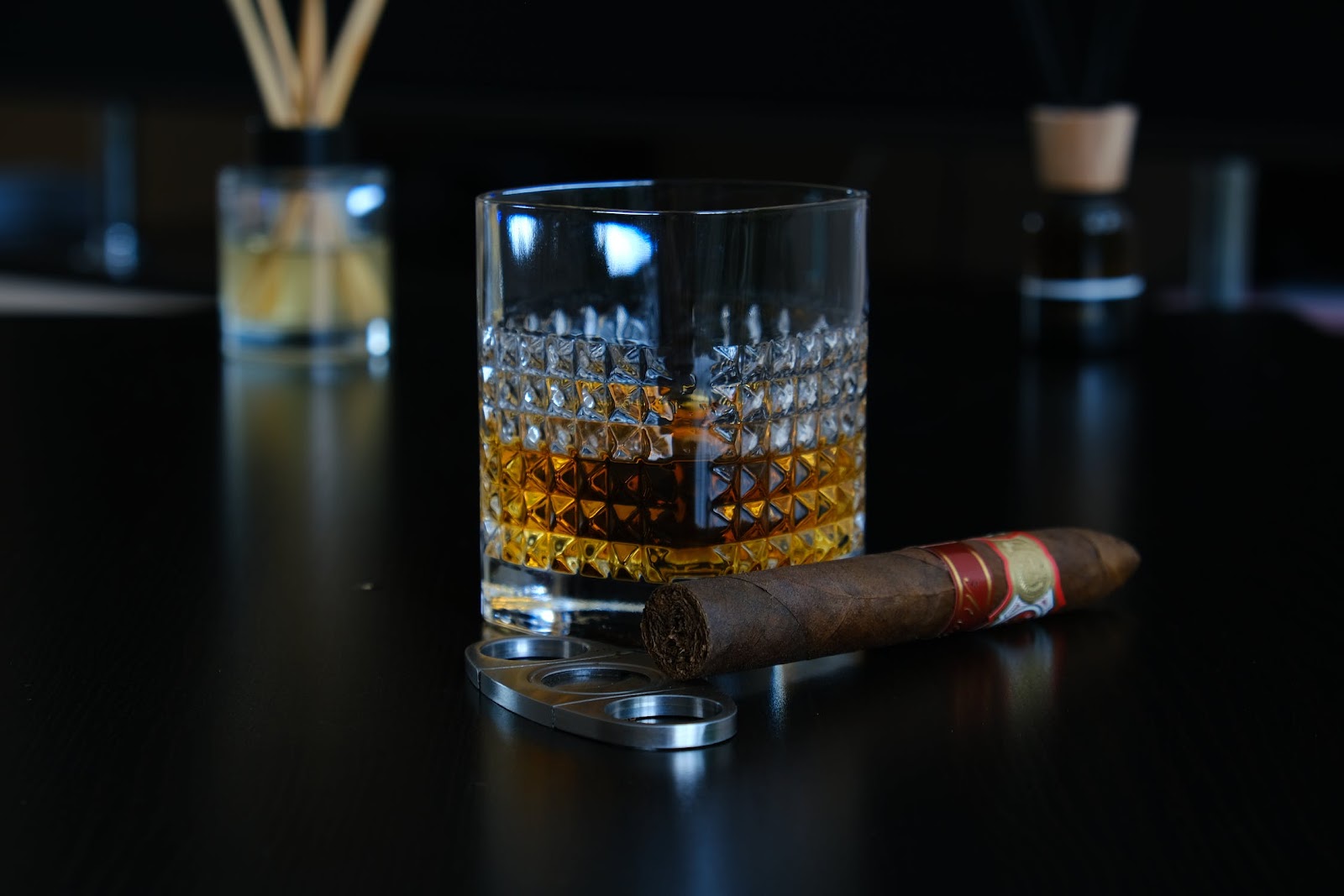Cigars and whisky are a classic pairing enjoyed by many enthusiasts. The combination of a fine cigar and a good whisky can enhance the flavours and aromas of both, creating a harmonious and enjoyable experience.
Here are Some Tips for Pairing Cigars and Whisky:
- Choose Complementary Flavours: The key to a successful pairing is finding complementary flavours. Lighter cigars tend to go well with lighter whiskies, while fuller-bodied cigars can be paired with more robust whiskies. For example, a mild Connecticut-wrapped cigar might complement a light Scotch or bourbon, whereas a strong Nicaraguan cigar might pair better with a peaty Islay Scotch or a smoky bourbon.
- Consider the Strength: Matching the strength of the cigar with the strength of the whisky is essential. A strong cigar can overpower a delicate whisky, and vice versa. Balance is key.
- Contrast or Complement: You can either choose to contrast the flavours or complement them. Contrasting would involve pairing a sweet whisky with a spicy cigar or a smoky whisky with a creamy cigar. Complementing would involve matching similar flavour profiles, such as a woody cigar with an oak-aged whisky.
- Start with Milder Pairings: If you’re new to cigar and whisky pairings, start with milder options and work your way up to stronger combinations as your palate develops.
- Cleanse Your Palate: Have some water or plain crackers on hand to cleanse your palate between puffs and sips. This will help you fully appreciate the flavours of both the cigar and the whisky.
- Sip Slowly: Take your time with both the cigar and the whisky. Sip the whisky slowly to savour its flavours, and don’t rush through your cigar. Puffing too frequently on the cigar can cause it to burn too hot, altering the flavour.
- Experiment: There are no hard and fast rules when it comes to pairing cigars and whisky. Experimentation is part of the fun. Try different combinations and take notes to remember what you liked and didn’t like.
- Respect Others: If you’re smoking cigars in a public place or around others, be mindful of the fact that not everyone enjoys the smell of cigars. Try to find a designated smoking area or be considerate of those around you.
- Quality Matters: Invest in good-quality cigars and whisky. Cheap cigars and low-quality whisky can detract from the overall experience.
Why People Combine Whisky And Cigars

The combination of whisky and cigars has been a tradition enjoyed by many for generations. Whisky and cigars can complement each other in terms of flavour. When paired correctly, the flavours of the whisky can enhance the taste of the cigar, and vice versa. For example, the sweetness of bourbon can complement the spiciness of a cigar, creating a harmonious and enjoyable flavour experience. The act of sipping whisky and puffing on a cigar is often seen as a way to relax and unwind. The slow, deliberate pace of enjoying both encourages individuals to take a break from their daily routines and savour the moment.There’s an aesthetic appeal to the combination of whisky and cigars. Many people find the sight of a cigar in one hand and a glass of whisky in the other to be visually pleasing and sophisticated.
In Closing Why It’s Popular
The enjoyment of smoking cigars with whisky is a personal experience, and your preferences may differ from others. The key is to find combinations that you enjoy and to savour the flavours and aromas that both the cigar and whisky offer.